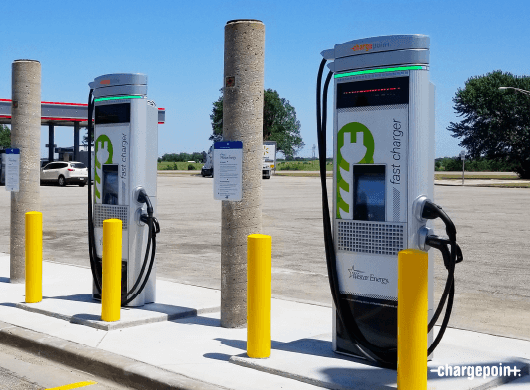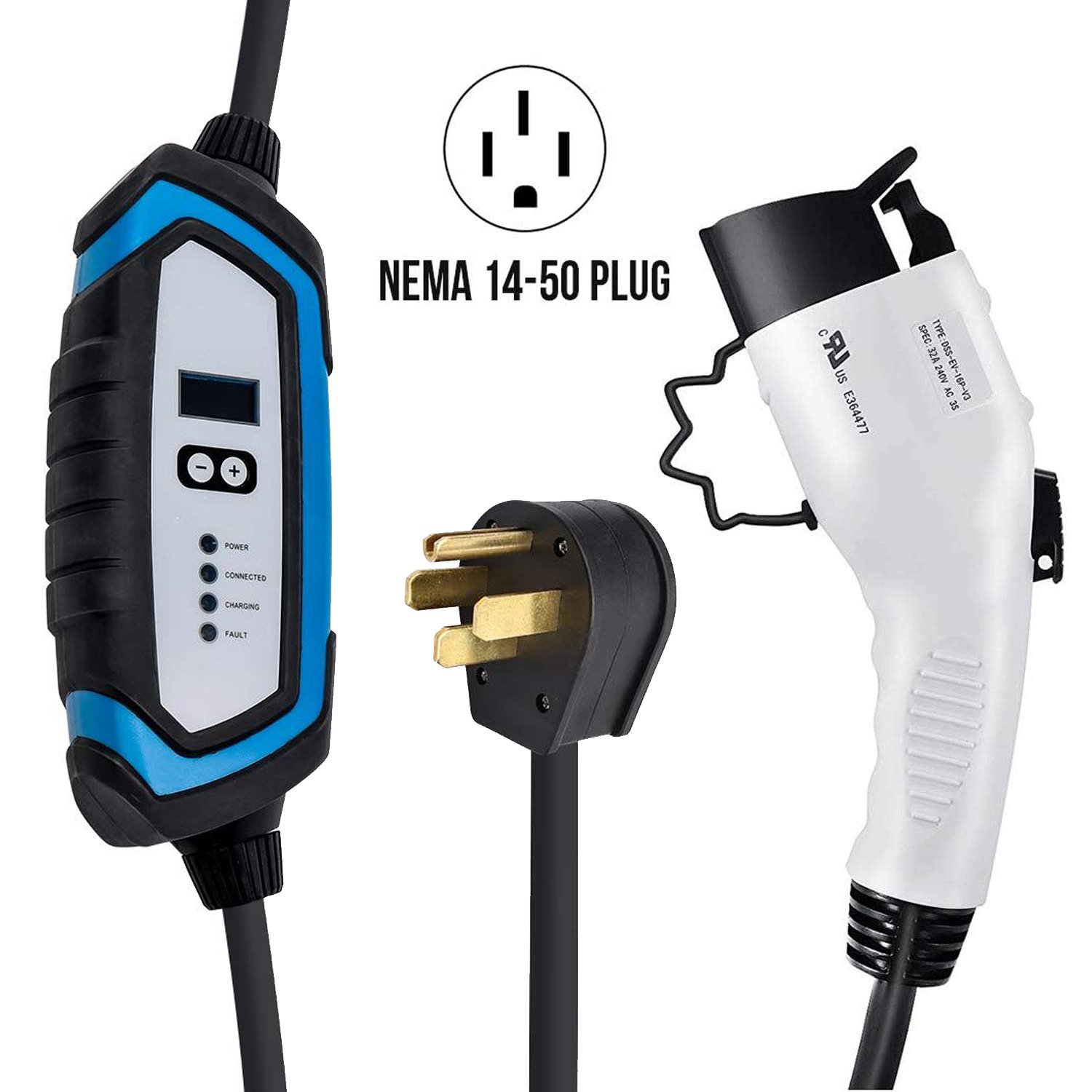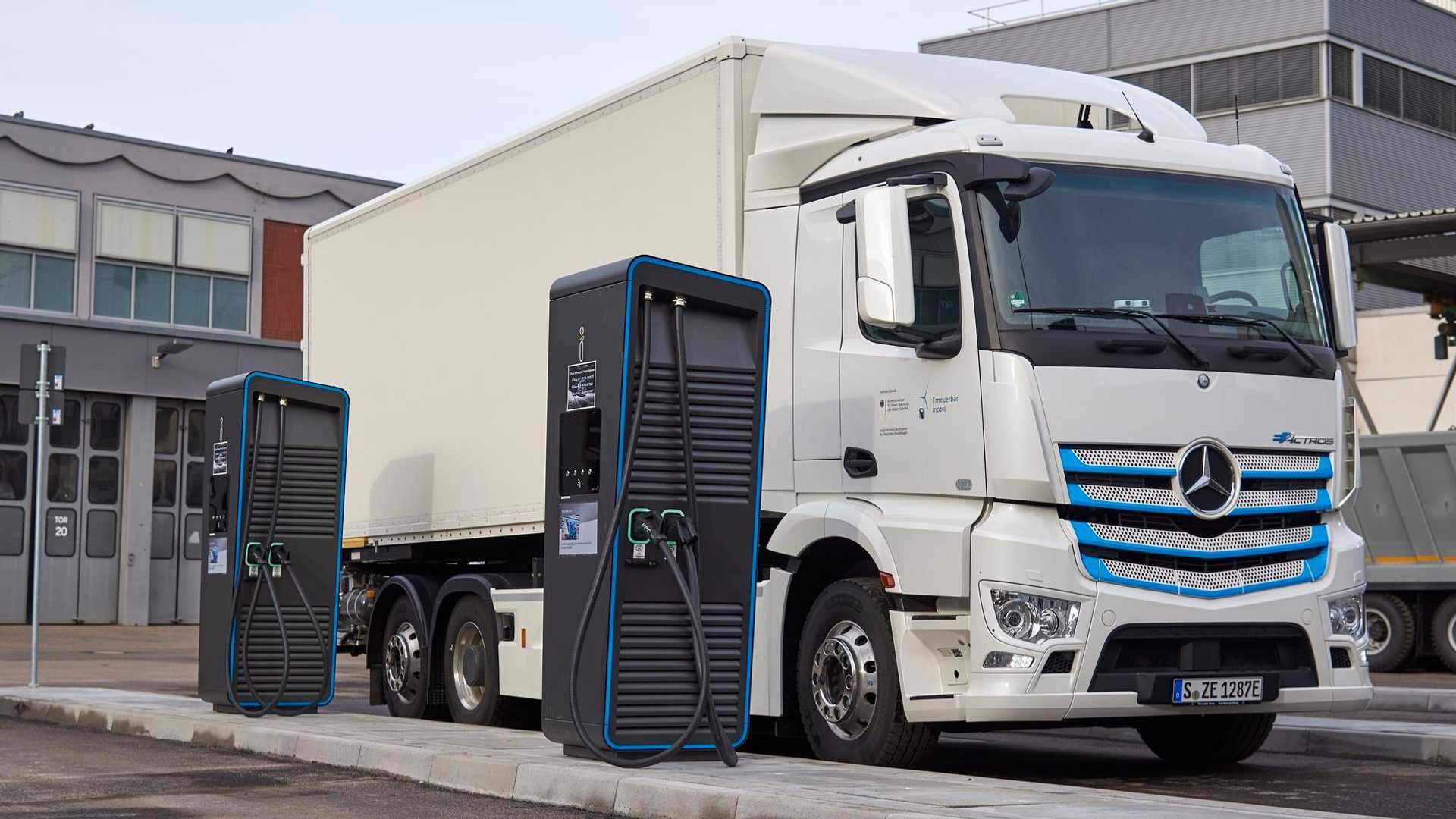
Transportation Electrification
Part 4: EV Charging Solutions
Electric Vehicle Customer Charging Solutions
EV Charging 101
The utility can support vehicle charging in a number of ways. Many customers will be able to charge at home for most of their driving needs. However, a robust corridor of DC fast chargers will give customers the peace of mind to travel freely as they do with current ICE vehicles. Utility support is also important for customers without dedicated parking at their residences.
Electric vehicle charging is categorized by charging speed/power levels and alternating current (AC) versus direct current (DC). AC, common for lower-powered charging, must be converted to DC using the vehicle’s onboard charger. A major determinant for charging speed and power requirements is dwell time — how long a vehicle is parked and charging. An EV parked in a garage overnight has a very different dwell time than an EV making a highway pitstop, and charging power levels at different locations need to reflect this.
Level 1 EVSE
Level 1 (L1) (1.4 kW power level) is the most widely available—but slowest—form of charging. A common 120V wall outlet can replenish a few miles of range per hour, which means a full charge could require up to 50 hours. L1 charging works best for drivers who do not drive large distances each day. U.S. drivers average 40 miles per day, which can potentially be replenished by an L1 charger overnight.
Portable Level 2 EVSE
Level 2 (L2) (4-19 kW power level) charging is found at homes, workplaces, shopping and recreation areas, school bus barns, and other fleet depots. L2 electric vehicle supply equipment (EVSE) uses a 240V AC circuit typically supplying between 20 and 100 amps (peak), translating to power levels between four and seven kilowatts (kW) for most smaller EVs, and up to 19 kW for others. These circuits are common in homes and are often used for electric stoves and clothes dryers. Most L2 connections are hard-wired to the electrical panel in residential, workplace, fleet, and public charging settings. However, charging can also be accomplished with a mobile connector. A crossover EV with a 75 kWh battery could recharge in three to 12 hours, depending on the power level. For a full-size pickup battery with a 200 kWh capacity, L2 charging at 30 amps could require 34 hours for a full charge (but only 3.5 hours to recover 40 miles of range) whereas a 100 amp circuit could fully recharge a pickup in 10.5 hours.
DCFC EV charger. Photo Credit: Tritium Charging
Direct current fast-charging (DCFC) (25-350 kW) moves DC power directly to the vehicle’s battery from the charging cabinet. This is the fastest form of charging for short dwell time applications that enable longer trips. Modern electric vehicles can recharge from 10% to 80% in around 20 minutes with high-powered DCFC. Depending on the vehicle’s battery size and efficiency, this requires chargers with power levels from 250-350 kW. This means that a crossover EV with a 75 kWh battery can replenish its state of charge to 80% in less than 20 minutes with a 350 kW charger, but a 150 kW charger would take twice as long.
Why the focus on 80%, instead of 100%? Standard practice when fast charging is to top out at 80%. This is because charging slows as a battery pack nears its storage capacity. This is referred to as charging taper. Each vehicle OEM has a different charging curve and approach to how they taper charging as the capacity nears full. Generally, larger batteries allow for a faster charge rate.
-
A GMC Hummer or Chevy Silverado with a much larger battery (200 kWh usable) would take over 3.5 hours to ‘fast charge’ to 80% on a 50 kW charger — impractical for long-distance travel. It is therefore important to future-proof charging in rural areas and other places where pickups and larger SUVs are common. With a 150 kW charger, these larger vehicles will charge to 80% in about an hour. This is why GM developed an architecture for the Hummer and Silverado to charge at 800V in order to harness the high power levels of 350 kW chargers. Other pickup manufacturers are moving in this direction.
eXtreme Fast Charging. Photo Credit: Mercedes-Benz
eXtreme Fast Charging (XFC) is the highest power level charging available, designed for ground-based vehicle fleets with power levels ranging from several hundred kW to more than 1 MW per vehicle. This allows operators to quickly recharge large battery packs in medium- and heavy-duty vehicles where battery capacities may exceed 500 kWh. Vessels such as electric ferries may require in excess of 10-20 MW.
Charging Power versus Charging Time
Charging time (often expressed in miles per minute of charging) is determined by several factors, including a charger’s power level, a vehicle’s efficiency and battery size, and a vehicle’s charging curve. A charger’s power level is the maximum output the charger can maintain. On the receiving end, the vehicle has a maximum power level it can accept, which can be affected by a given state of charge and battery temperature. Even though many vehicles still only accept 150-200 kW peak charge rates, more and more are able to accept higher charge rates of up to 350 kW.
The Hyundai Ionia 5, a medium-sized EV, can go from 10% to 80% charge level in 18 minutes using a 350 kW charger, adding over 210 miles of range. A GMC Hummer EV, using that same charger, takes 42 minutes for the same charging level increase. This charging time difference is mainly due to the truck’s far-larger battery pack, where much more energy needs to be replenished during a charging session.
Managed Charging 101
Managed charging is the key to maximizing benefits to the utility, the grid, and the environment. It provides tools for utilities to manage charging behavior and move loads from peak to off-peak times or times of excess renewable generation when wholesale power is inexpensive or renewables are curtailed.
Managing this new load is essential to avoid potential issues on the utility’s distribution system and costs associated with higher coincident peaks. It is also far easier to begin a customer’s (or a fleet’s) electric vehicle journey with managed charging rather than disrupting established behaviors down the road. The utility can once again act as a trusted source to help reduce costs for the general public and fleet customers by harnessing EVs as a grid asset rather than a potential liability if charging is unmanaged.
-
While simultaneously helping prevent downside risks to the utility, managed charging offers strong upsides to the utility and utility customers. Maximizing the financial benefits to all while keeping customers satisfied translates to a goal of reducing charging during sub-optimal periods like Heavy Load Hours (HLH) for some utilities, while maintaining enough battery state of charge for customers to complete all vehicle trips. This adds to grid resiliency by providing utilities with additional emergency demand response mechanisms.
Managing charging can help to optimize energy supply & wholesale costs. Image Credit: Carlo Corinaldesi at the Technical University of Vienna in Energies Journal
EV benefits climb dramatically when charging is managed. An E3 study in the Pacific Northwest from 2019 found that moving charging to light load hours can roughly double an EV’s net economic benefits for the ratepayer. Depending on the utility, their load profile, and demand charges from the G&T, there may be times where active managed charging might move charging to heavy load hours to reduce demand charges from the G&T. Regardless of when it is most advantageous for vehicles to charge, managed charging is the key enabling this flexible load.
Managed Charging Programs
Rate structures play an important role in designing any type of managed charging program. The differential between peak and off-peak times is the key to incentivizing passive or active managed charging programs. Advantageous off-peak rates can help speed EV adoption, especially for fleets, by lowering total cost of ownership (TCO) for vehicles and reducing payback times for potential cost differentials between ICE and electric vehicles.
It is important to provide an excellent customer experience by prioritizing customer driving needs where customers can select their desired state of charge by a given time of day (i.e., 80% SOC by 7am) or easily opt-out some days.
Passive Managed Charging programs rely upon shaping customer behavior to affect charging patterns (also called behavioral load control). Education campaigns, apps, or fleet telemetry tools may help utility customers voluntarily shift charging behavior. The peak/off-peak differential is key when developing managed charging programs to effectively move when charging occurs by passing on savings to customers (from residential to commercial).
Active Managed Charging is the most robust form of managed charging that gives the utility (or a third party) the ability to control either when a vehicle charges or how much power a vehicle draws from the grid. Utilities or aggregators use dispatch signals via communications sent to vehicles, EVSE or smart panels etc.
Unidirectional controlled charging (V1G) is currently the most common form of active managed charging. V1G technologies can help balance the grid and support large-scale EV charging needs by selecting optimal times for charging and adjusting power levels based on grid conditions. This load balancing helps to reduce peak loads. By shifting and flattening load peaks, a utility can reduce peak power costs and make greater use of its generation assets, especially renewables. V1G can also reduce stress on customer circuits, transformers, and distribution substations — which helps avoid the need for costly infrastructure upgrades by both customer and utility.
Load control is primarily managed through EVSE wireless connections or by automaker telematics via onboard API software. Some are exploring smart circuits or smart electrical panels. Recent advances may soon allow utilities to leverage advanced metering (AMI) with demand response protocols (DERMS). The use of open standards like the Open Charge Point Protocol (OCPP) will help future-proof active managed charging investments and prevent stranded assets.
Bidirectional vehicle-to-grid (V2G) is the next level of charge control, in which electric vehicles can send power back to the grid. EV batteries can act as portable power stations by dispatching power when needed during periods of constrained capacity and drawing power during periods of abundant energy supply and low wholesale prices. Some distribution utilities are negotiating for exposure to wholesale prices in order to maximize V2G benefits. This need for revised power contracts will grow as V2G scales.
Pilots are growing in scale to demonstrate the true power of this technology, including many pilot projects underway with electric school buses. They are an ideal use case with large batteries, long idle times to recharge overnight, and a tendency to be idle during evening and summer peak demands. Bidirectional vehicle-to-anything (V2X) technology is evolving rapidly. It is important to begin planning and deploying pilots in order to be prepared for this exciting opportunity as it goes mainstream. Open standards including ISO 15118 and OCPP are key to future-proofing.
Exploring Ways the Utility Can Serve Customers with EV Charging Program Activities
EV Customer Charging Solutions by Location
The Potential Advantages of Utility-Owned Public Charging
Co-op-owned public charging infrastructure can help solve three of the largest problems within the public charging space, particularly along highway corridors:
More Reliable Chargers
Unreliable chargers can fall into maintenance black holes, being off-line for months or more. This strips customers of confidence to travel where they need. Privately owned and operated chargers suffer the most from this problem. Community-centric charging equipment, owned and maintained by the local utility, gives EV drivers peace of mind and a reliable party to contact about any issues.
Sufficient Charging Capacity
Capacity constraints — namely, a limited number of charging ports in order to maximize each charger’s utilization rate — can lead to underbuilt charging infrastructure that can cause large queues during peak travel times. This can damage driver confidence nearly as much as broken chargers. To combat this, Tesla, with over 1,300 DC fast charging locations in the United States, installs a minimum of six ports at each DCFC location, even in the most rural areas. Co-ops are in a good position to think long-term about charging station investments, building out larger stations that are future-proofed as EVS become more prevalent.
Adequate Power Levels
Similarly, utilities can be thinking about the long-term power needs at each station. What is necessary to ensure that pickups with large battery packs can recharge to 80% within 20-30 minutes? What about multiple trucks charging simultaneously? Electrify America is focused on building networks to meet this need with a minimum power level of 150 kW per port, and often 350 kW per port. Co-ops can help drive these standards to support their members in places the major charging networks do not cover. Additionally, co-ops can prepare for future expansions by doing the trenching and running conduit when performing other maintenance. This will accommodate more chargers once more EVs are on the road. Doing this work now will be a small incremental cost when compared to coming back a few years later to re-dig to prepare for charging station installs.
EV Charging Make Ready Programs
Utilities can be a key accelerator of EV charging infrastructure to speed the transformation to electric transport. EV “make ready” programs can cover a number of types of charging which we will explore next. Make ready programs can help ease charging infrastructure installation on the utility side of the meter or on both sides of the meter.
Programs can help school districts, multi-family housing complexes, commercial fleet build-outs, DC fast charging builds, or other applications. Many customers who can benefit the wider community with transportation electrification may not be well-versed in electrical infrastructure, whereas team members at the utility are experienced in this area.
Examples of EV charging make ready programs:
Collaborative Rate Design
Piedmont Electric’s tiered rate structure. Image Credit: Piedmont Electric Membership Corporation
It is important for the utility to support electrification through thoughtful rate design. Rates are the bedrock for effective managed charging programs, whether for single family, or multi-family residential customers or for fleet customers.
New rural EV charging installed with support from Michigan Electric Cooperative Association. Photo Credit: MECA
While dwell time governs the type of charging infrastructure for particular locations, rate design can make or break charging deployment. In locations requiring high power levels where robust DCFC infrastructure is necessary to kick off mainstream EV adoption, early deployments can be stifled by demand charges.
Rural areas especially need high-speed DCFCs with high power levels to support electric pickups. These high power levels are even more critical for towing.
Utility support for fleets through rate design is crucial. Fleet managers are often counting on fuel savings that EVs offer to reduce the total cost of ownership (TCO). However, demand charges may halt the scaling of a fleet beyond pilot size. Similar to DCFC along highway corridors, demand charges can dominate charging costs when vehicle counts and the number of charging sessions in a month are low. This can be true for school districts, transit agencies, and commercial fleets with medium- and heavy-duty vehicles. Similar issues may occur at fleets with large numbers of light duty vehicles which are all plugged in at the same time without managed charging. The utility can work in partnership with customers to develop rates and charging strategies that help users make it to larger scale electrification where volumetric (kWh) sales dominate demand charges. RMI and other groups have developed strategies to overcome these potential obstacles.
Additional Resources
Michigan Electric Cooperative Association: Filling A Gap Michigan Co-ops Bring Electric Vehicle Chargers to Rural Communities
DOE charging resources for multi-family housing, workplaces, public charging, and residential housing.
CALSTART, AMPLY Power: Importance of Managed Charging Report
Southern California Edison: Charge Ready Program






















